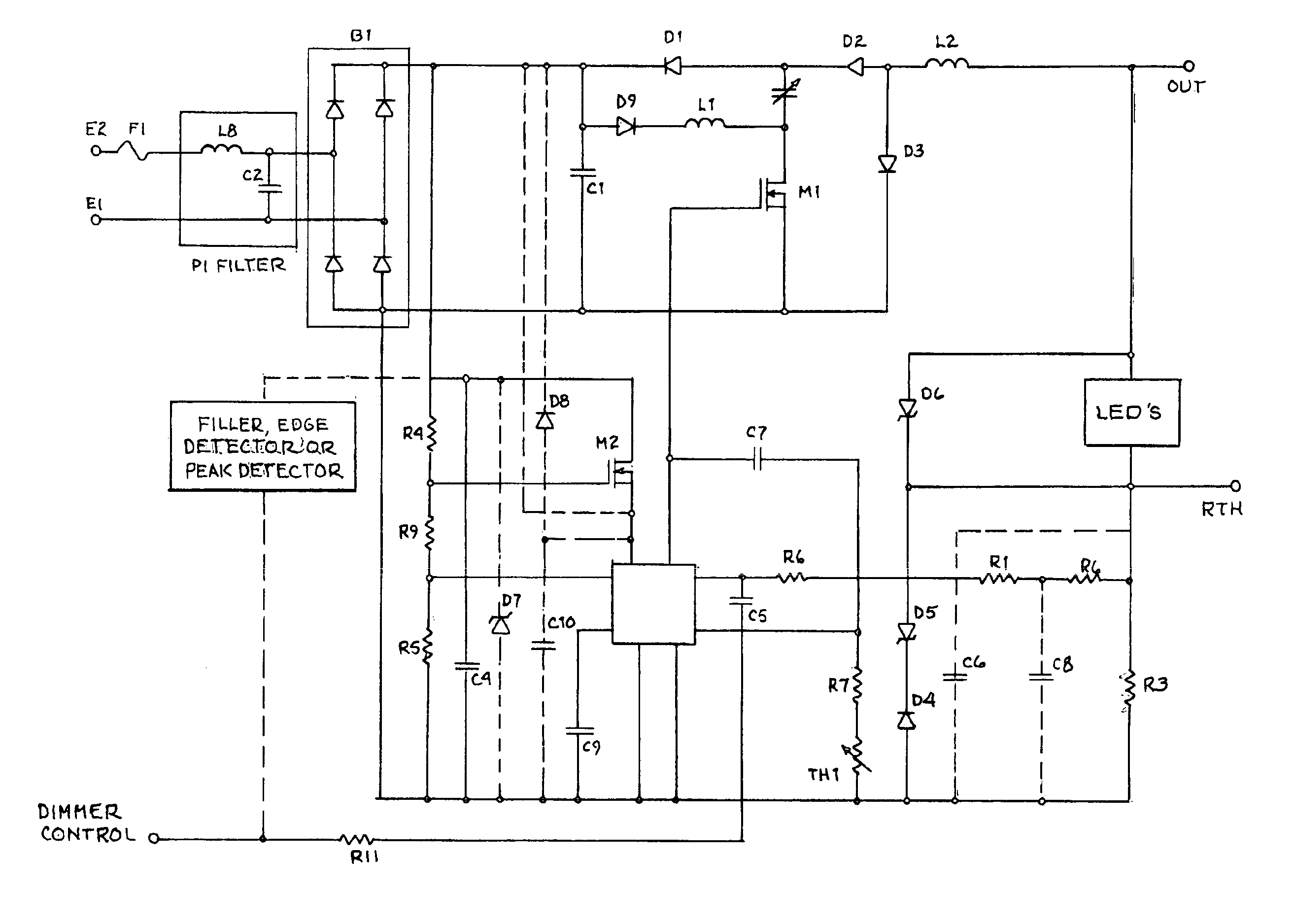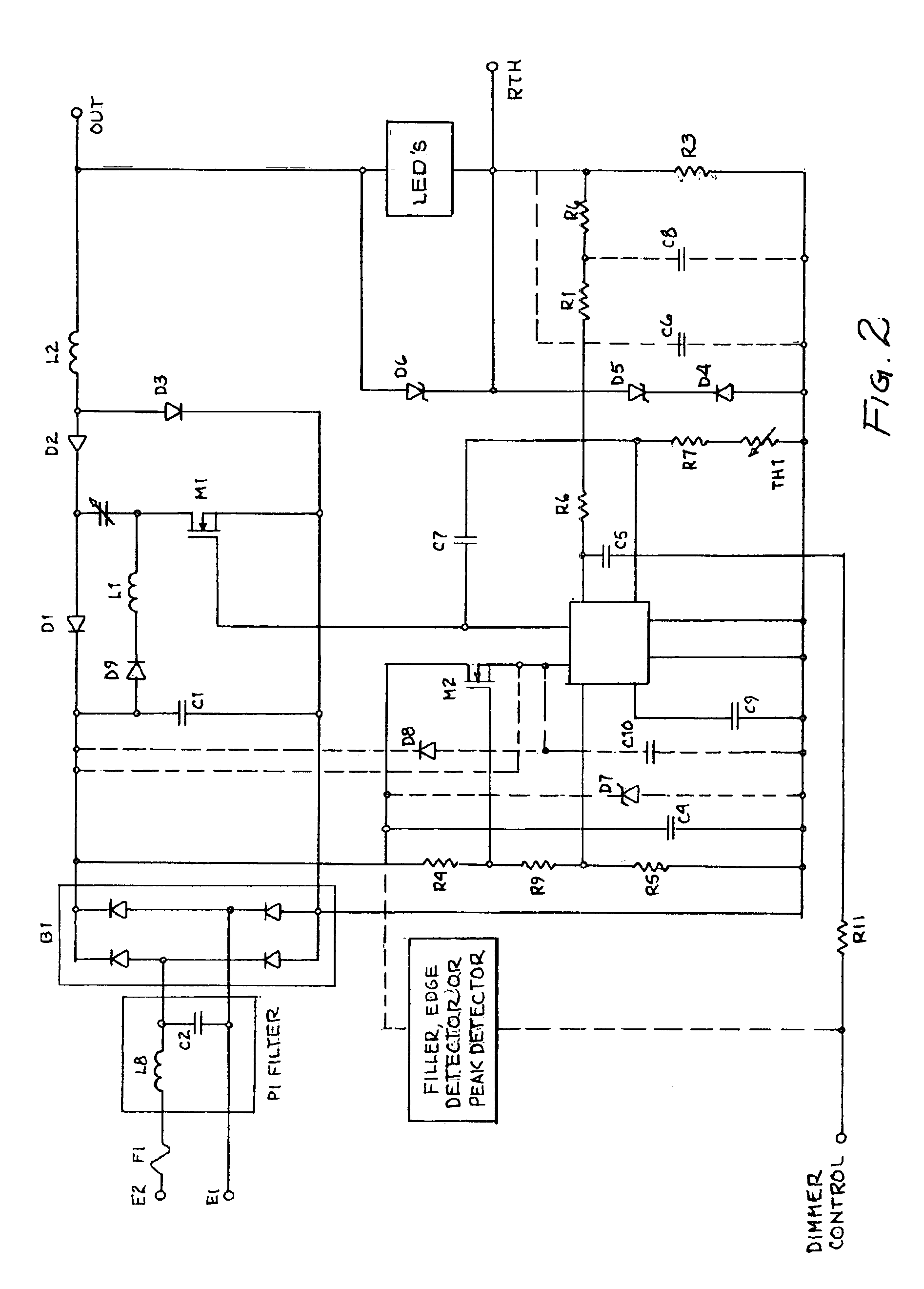Optimal control of wide conversion ratio switching converters
- Summary
- Abstract
- Description
- Claims
- Application Information
AI Technical Summary
Benefits of technology
Problems solved by technology
Method used
Image
Examples
Embodiment Construction
[0025]Referring to FIG. 1, a prior art power supply is depicted. A bridge BR1 full-wave rectifies an AC line input to produce an input power source. Filter capacitors C1 and C2 average the voltage at the output of bridge BR1 to produce a DC voltage (approximately 360 Volts DC without load). Without filter capacitors C1 and C2 the power supply cannot change control function (e.g., duty cycle in a pulse-width modulated (PWM) power supply) as the input waveform varies in voltage from 0V to 360V. The control function dynamic range required to accomplish proper line regulation, which is the power supply's rejection of input voltage variation, is too wide for operation without filtering. An inductor L1 is coupled between capacitors C1 and C2 to provide inrush protection and electromagnetic interference EMI filtering. A resistor R1 is used to set the initial inrush current, providing a soft-start current to charge capacitor C2 until the field produced in inductor L1 collapses.
[0026]The pow...
PUM
 Login to View More
Login to View More Abstract
Description
Claims
Application Information
 Login to View More
Login to View More - R&D
- Intellectual Property
- Life Sciences
- Materials
- Tech Scout
- Unparalleled Data Quality
- Higher Quality Content
- 60% Fewer Hallucinations
Browse by: Latest US Patents, China's latest patents, Technical Efficacy Thesaurus, Application Domain, Technology Topic, Popular Technical Reports.
© 2025 PatSnap. All rights reserved.Legal|Privacy policy|Modern Slavery Act Transparency Statement|Sitemap|About US| Contact US: help@patsnap.com



